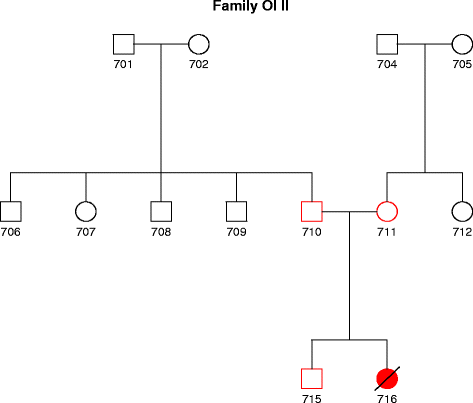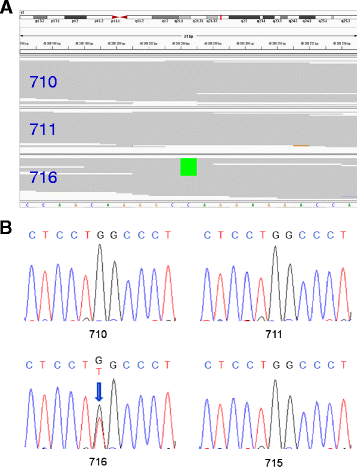Whole-exome sequencing identifies de novo mutation in the COL1A1 gene to underlie the severe osteogenesis imperfecta
- PMID: 25958000
- PMCID: PMC4429824
- DOI: 10.1186/s40246-015-0028-0
Whole-exome sequencing identifies de novo mutation in the COL1A1 gene to underlie the severe osteogenesis imperfecta
Abstract
Background: Osteogenesis imperfecta (OI) comprises a clinically and genetically heterogeneous group of connective tissue disorders, characterized by low bone mass, increased bone fragility, and blue-gray eye sclera. OI often results from missense mutations in one of the conserved glycine residues present in the Gly-X-Y sequence repeats of the triple helical region of the collagen type I α chain, which is encoded by the COL1A1 gene. The aim of the present study is to describe the phenotype of OI II patient and a novel mutation, causing current phenotype.
Results: We report an undescribed de novo COL1A1 mutation in a patient affected by severe OI. After performing the whole-exome sequencing in a case parent-child trio, we identified a novel heterozygous c.2317G > T missense mutation in the COL1A1 gene, which leads to p.Gly773Cys transversion in the triple helical domain of the collagen type I α chain. The presence of the missense mutation was confirmed with the Sanger sequencing.
Conclusions: Hereby, we report a novel mutation in the COL1A1 gene causing severe, life threatening OI and indicate the role of de novo mutation in the pathogenesis of rare familial diseases. Our study underlines the importance of exome sequencing in disease gene discovery for families where conventional genetic testing does not give conclusive evidence.
Figures



References
-
- Kielty CM, Grant ME. Connective Tissue and Its Heritable Disorders. Hoboken, NJ, USA: John Wiley & Sons, Inc; 2002. pp. 159–221.
-
- Ben Amor M, Rauch F, Monti E, Antoniazzi F. Osteogenesis imperfecta. Pediatr Endocrinol Rev. 2013;10(2):397–405. - PubMed
Publication types
MeSH terms
Substances
LinkOut - more resources
Full Text Sources
Other Literature Sources
Medical
Molecular Biology Databases
Miscellaneous

